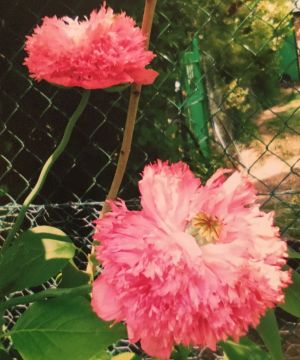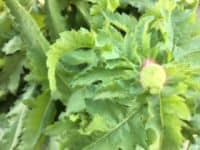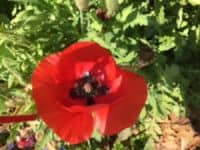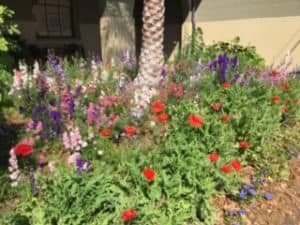
Poppies
Papaver species is a member of the poppy family. All should be planted in rich, perfectly drained soil high in sand and organic matter. Sow poppy seeds in ground in fall for winter and early spring blooms. Transplants can be put in during early spring. Space 8-12 inches apart. Poppies are used for cut flowers, in beds and in backgrounds. Plants succumb to our hot weather and need to be replanted.

P. orientale or Oriental poppy, originates from Asia and is a hardy annual which grows to 3ft. This showy plant has single or double blooms in orange, red and pale pink.
P. nudicaule or Iceland Poppy grows to 1 foot. This poppy is fragrant, with crepe textured blooms up to 3 inches. Flowers are yellow, pink, orange, greenish and red with fernlike foliage.
P. rhoeas or Field, Flanders and Shirley poppy grow to 3 feet tall. Unlike the other varieties, likes sun to part shade. Flowers are 2 inches in red, purple, white and are single or double blooms. Do well in raised beds.
P. somniferum, the opium poppy is not available today.

Anemone coronaria or poppy anemone is a tuberous perennial. This is a poppy-like flower. Needs to be planted in well drained fertile soil which is slightly acidic garden loam soils and full sunlight. Tubers are to be planted in October to December. Soak tubers in water for 1 hour before planting. Plant 1 inch deep and 6 inches apart. Foliage is parsley like in Appearance. Shades of red, white and blue. Flowers up to 2 ½ inches across. Single blooms in late winter to late spring. Use for cut flowers, containers, rock gardens and in garden beds and for interest in designs.

submitted by Karen Blackburn
